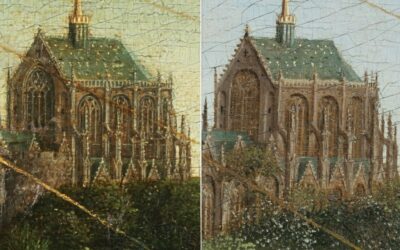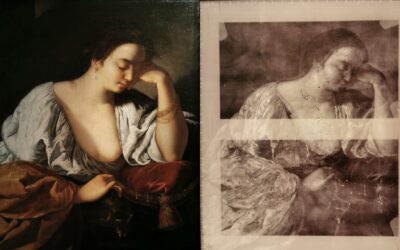The recent discovery of YInMn Blue, even if the pigment is extremely expensive (€ 148.52 for 40ml), is a joy for artists – always among the first ones to welcome new findings-, but also for art scientists!
In fact, the analysis of the pigments used has always been very useful for establishing the dating and provenance of a painting.
Lapis Lazuli, for example, is a medieval invention. Theophilus who wrote his treaty in 1120, does not mention it: his blue is azurite, while Cennino Cennini knows it well.
But the Lapislazuli loses its purity in oil painting. Therefore it also loses part of its charm and its use reduced over time, as the new medium imposed itself.
However, outside Italy it was already very uncommon. Few, in fact, could afford it. One was Dürer, who however complained a lot about its price (100 times that of the other pigments)!
For centuries, the Azzurri remained luxury items. Smalt and Verditer blue were not expensive, but the only, mild, alternative to the shade of Lapis was Indigo.
The situation changed around 1705, when Prussian Blue was discovered. It had a great success, but it could still not really replace Lapis.
Although Cobalt Blue had been discovered in 1802, it was Goethe, incredibly, who suggested that as blue deposits were found in the Italian lime kilns, and perhaps some similar procedure could be studied to synthesize an artificial Lapis Lazuli.
In 1842, the Société d’Encouragement per l’Industrie Nationale offered a prize of 6,000 francs to whoever produced it first. Once a stable formulation was found, around, 1870 Cobalt blue became the standard blue color, used by everybody.
Nevertheless, even if 1935 brought with it two new pigments: Monastral Blue and Manganese Blue, the perfect blue had not yet been invented.
The painter Yves Klein between 1945 and 1955 turned to a producer, convinced that they could do better. He thus patented the International Klein Blue, where, however, the real novelty is the binder. We now have the new YInMn Blue.
And the history of art continues to go hand in hand with that of technology.



